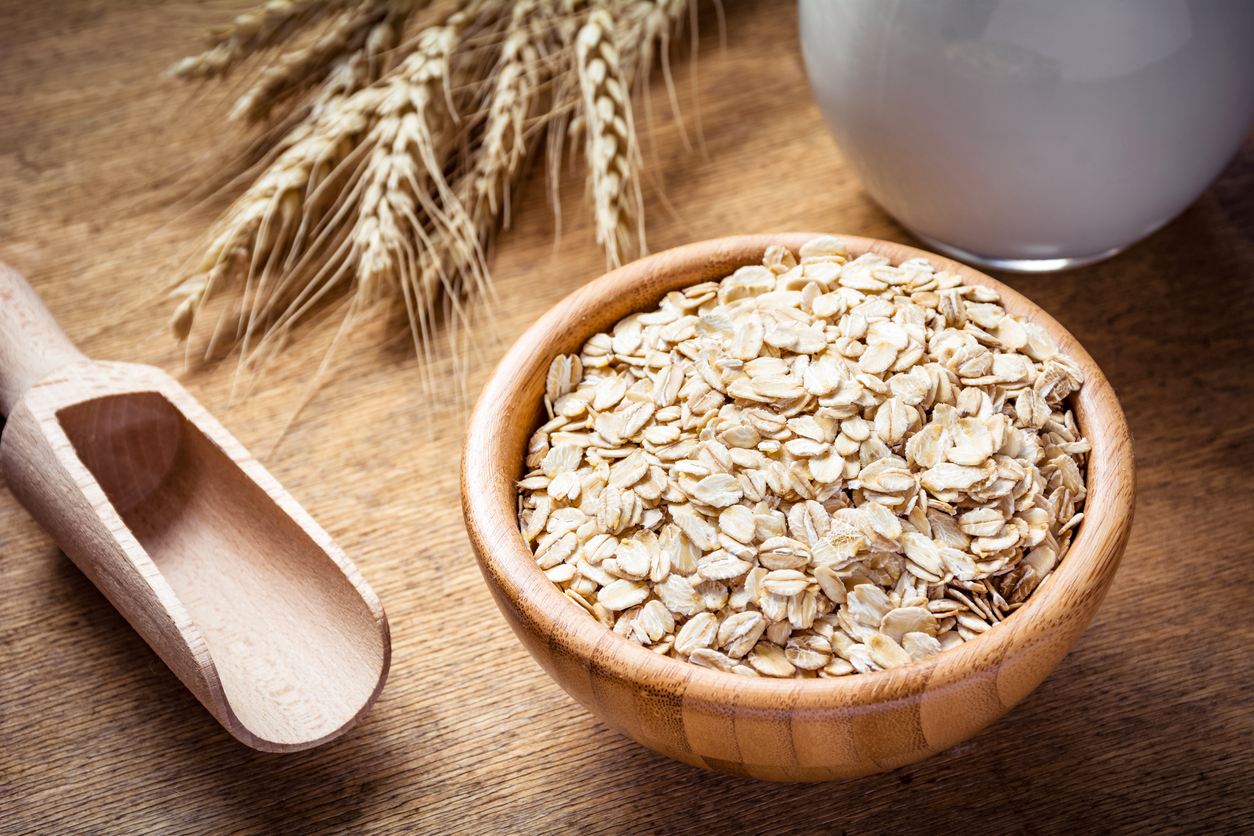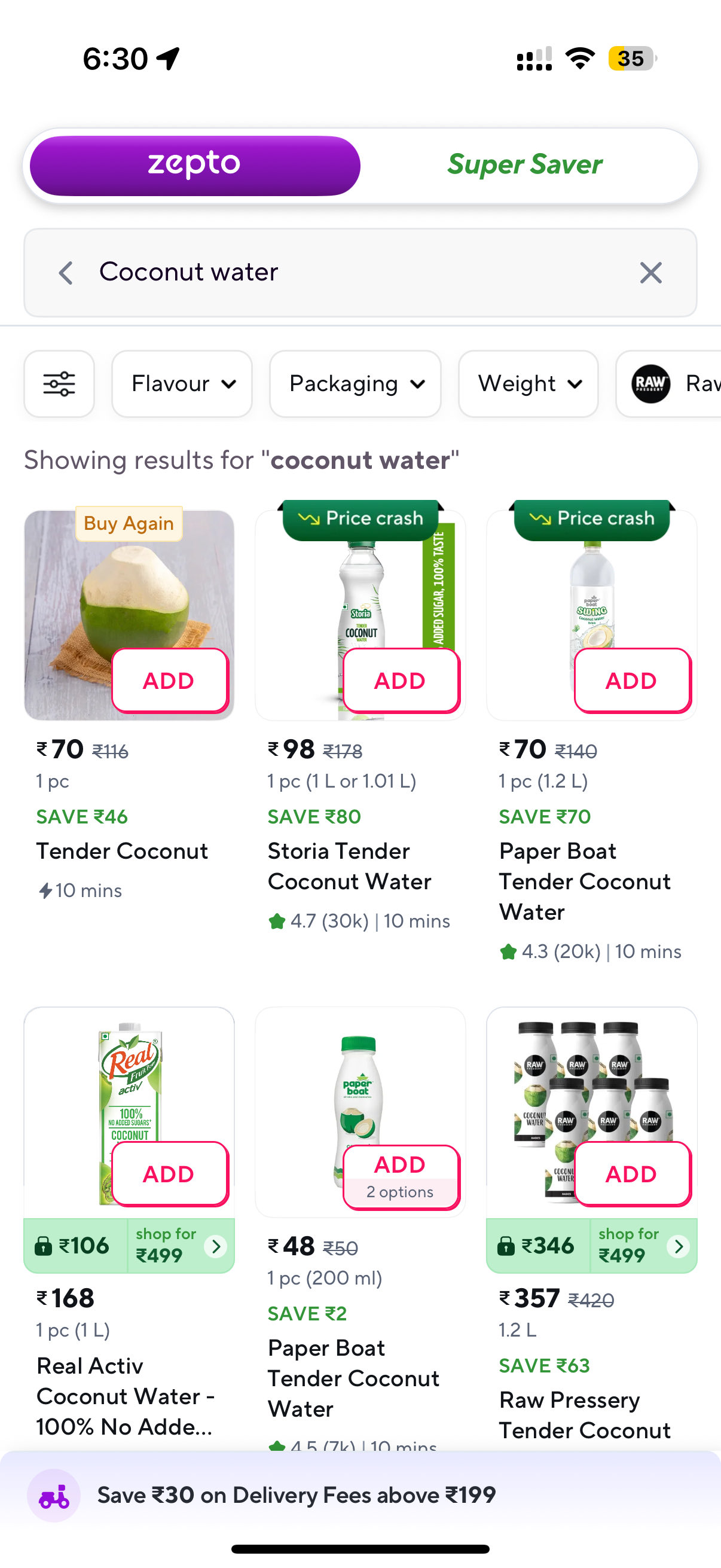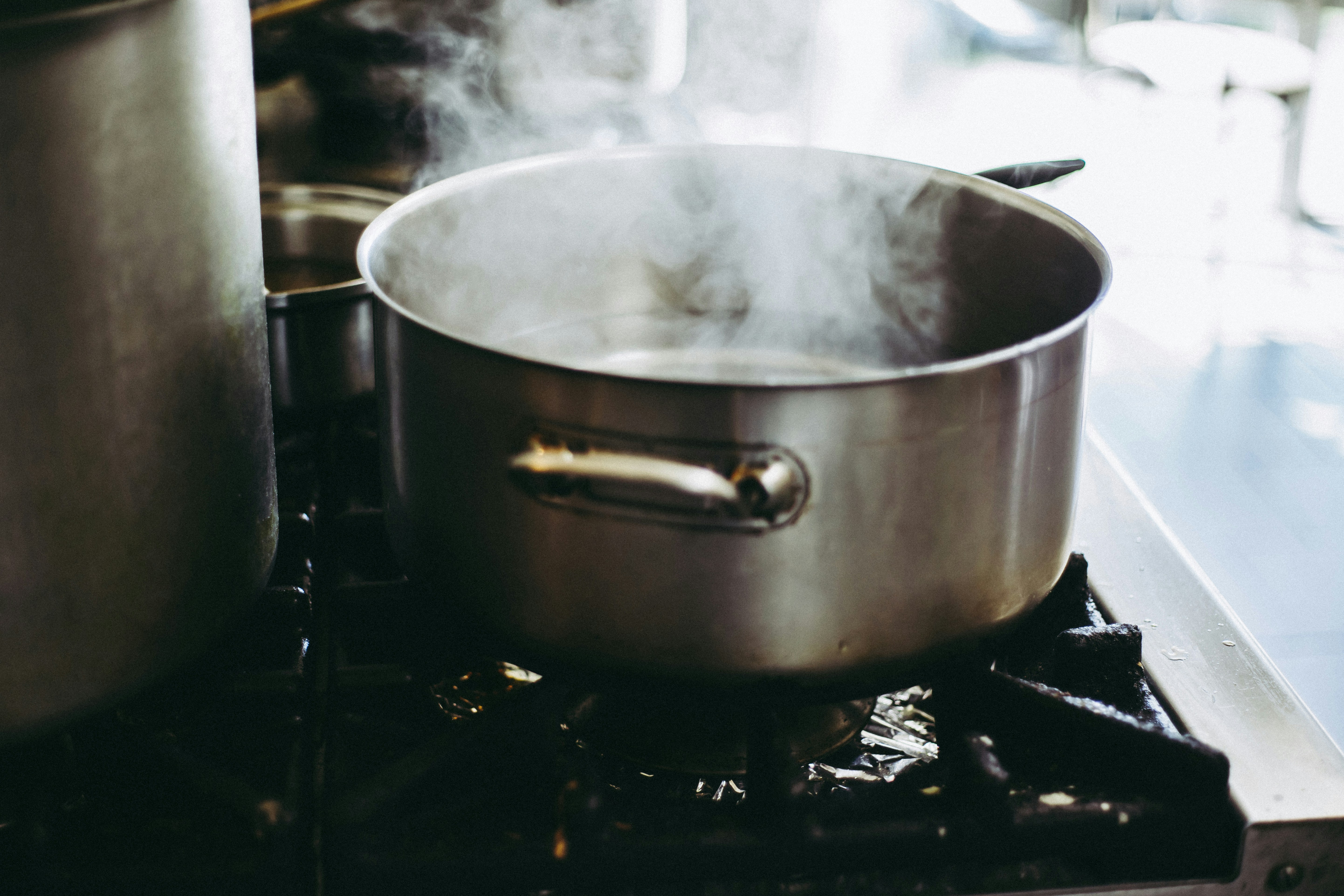Want to learn how to reduce stress? Here are 9 brilliant ways to reduce anxiety.We live in a world marred by distraction. Our minds are always racing and we're constantly hurling from one thought to the next - "What's for dinner? God, I have so much work piled up. I’m so excited for this weekend, where all shall I go? Should I call my mom back now? No, I’ll call her tomorrow. What if my boss doesn’t like my new proposal? What shall I wear for my date tomorrow? (Stop buzzing brain, stop)... I forgot to pick up the dry cleaning! Wow, another chore. Wait, why in the world am I thinking about clothes?” And so the endless rant goes on all day long into the wee hours of the morning, whirling through apprehensions, ideas, emails, fantasies and to-do-lists. More often than not, we stress over the perception of what happened, and worry that things won’t go the way we want them to. We are over-worked, anxious and exhausted. Stress is stealing our peaceful sleep every night, sabotaging our confidence and turning our stomach into knots, like a monster under the bed. And yet, we accept stress as a way of life.Believe it or not, the conception of biological stress is a fairly recent discovery. It wasn't until the late 1950s that endocrinologist Hans Selye first identified and documented stress. While symptoms of stress existed long before Mr. Selye, his discoveries led to new research that has helped millions combat stress. Note: We all respond to stress differently, so there’s no ‘one size fits all’ solution to managing stress. We’ve listed 9 healthy ways to reduce stress that can get you from OMG to Om in just a few minutes.
1. MeditationAuthor of 10% Happier, Dan Harris says, "We spend a whole lot of time on our bodies, our stock portfolios and home decor. But very rarely do we spend time fine tuning the filter through which we experience it all: our minds." "When you're stressed or anxious you tend to have unproductive worries that can often be nagging. Mindful meditation teaches you to identify that thought as useless, as just a thought and not a part of who you are”, explains a researcher from John Hopkins. Till a few years ago, meditation was known to be a practice adopted only by spiritual yogis or savvy hippies. Fast forward to today and you're sitting on scientific research which shows that meditation has brilliant health benefits, from improving brain function to treating mild to moderate depression, and helping relieve stress and anxiety. Meditation is the fuel that allegedly unlocks productivity and creative bursts. So how do you make it habitual? Just like brushing your teeth, you need to start by making meditation a necessity. Find a comfortable position and quiet spot and start to breathe in and out, really slowly. Focus on your breathing or on the energy in your hands, legs and your body for about 10 minutes a day.

2. GratitudeGrowing up, I’ve always gone off to sleep reciting “Thank you God for the world so sweet, Thank you God for the food we eat, Thank you God for the birds that sing, Thank you God for everything”. When you’re stressed, you’re constantly thinking about how everything in your world is going downhill. So learn to shift the focus to all the things in life that are going right for you and appreciate them. Counting your blessings actually helps put things in perspective, and raises your happiness barometer (tried and tested). Ever since I read Rhonda Byrne’s The Magic, I write down at least 10 things that I’m grateful for every day.3. Eat to Beat StressWhen we are stressed, we forget to eat right and instead resort to sugary, fatty snacks as a pick-me-up. Since food really impacts our emotional state, it is important we check our diet. Skip the caffeine and alcohol since they dehydrate the body and ultimately increase anxiety. So what should you be eating? You can start your day with bananas which help repair cell damage caused due to stress, or a bowl of oats spruced up with fresh fruits and a dash of honey in order to boost positive energy. Even the sweet, pleasant fragrance of the coconut is known to have a psychological effect that reduces anxiety and slows down the heart rate. It also helps tone down the 'fight or flight' response when faced with a stressful situation. Loaded with vitamin B (nature’s own happy pill), lentils help lower tiredness and fatigue, by firing up your energy levels. “Research suggests that the ‘good bacteria’ found in yogurt helps to kill anxiety and depression”, says Dr. Manoj K. Ahuja, Sukhda Hopsital.

4. Self-Soothea) Laugh out loud: Laughing tricks your nervous system into making you happy, it releases endorphins that reduce levels of stress-causing hormones like cortisol and adrenaline. You obviously can’t burst into a fit of giggles at your desk, so maybe put on a comedy TV show or movie to de-stress. You’ll soon be cracking up, rather than cracking up. (Get it?)b) Take a deep breath: One of the most effective ways to activate the relaxation response is by decreasing the heart rate. But since we can't alter our pulse, try deep breathing or diaphragmatic breathing to lower your rapid heart rate. For an easy 3-5 minute exercise, sit up in your chair with your feet flat on the floor and hands on top of your knees. Breathe in and out slowly and deeply, concentrating on your lungs as they expand fully in your chest. This helps oxygenate your blood, center your body, and clear your mind.c) Be Positive: Intuitively, we know how to help others combat stress but can’t help ourselves. So if calling a friend or loved one isn’t in the cards, talking calmly to yourself is the next best thing. Assure yourself that this feeling will pass. Malini Sawhney, a Delhi-based Meditation Expert suggests affirmations as a coping strategy. “I am calm and relaxed. I am in the perfect place for me. I am the divine manifest. Life is good. Thank you! Thank You! Thank You!”d) Jot it Down: Venting on paper before going to bed helps declutter your mind instead of dwelling in the days activities or worrying about tomorrows workload. According to a recent study published in Psychotherapy Research, patients who were told to let out their emotions through expressive writing experienced greater reductions in anxiety and depressive symptoms and better progress in psychotherapy when compared to a control group. Keeping a journal is in fact an effective stress relief exercise as it provides an outlet for expressing difficult emotions and helps you sort out and clarify your thoughts. You can even start a diary on your smartphone or laptop. If you enjoy art, you can draw, paint, or sculpt pieces that express how you are feeling. According to Art Therapist Sonia Bhandari, VIMHANS Hospital, “Artistic expression helps surface hidden emotions, hence being cathartic in nature”.

5. Get More SleepMost people need 7 to 9 hours of sleep a day to get a healthy night's sleep. If only we could slip into slumber as soon as our head hits the pillow! Dr. Adarsh Kumar, Internal Medicine, National Heart Institute says,"Poor sleep takes a toll on everything, from your job performance to your daily chores. So ask yourself this - are you practicing good sleep hygiene”? It’s important to completely unplug and switch off all devices or electronics 90 minutes before bed. Try to block the light from your alarm clock too, since it alerts the body's circadian clock. You can also position your pillow under your neck in order to press against your carotid artery, thereby reducing blood flow to your brain and helping you fall asleep faster. Try rolling your eyes in the back of your head in order to relax the eye muscles and trigger melatonin naturally. Dr. Kumar adds, “Too tired to shower before bed? Just wash your feet and massage them, it usually does the trick”!

6. Exercise (Even For a Minute!)No, seriously. Just a short walk around the office or simply standing up to stretch can offer immediate relief in a stressful situation. Exercise improves blood circulation, releases endorphins and can improve your mood almost instantaneously. Even though we all know the feeling of that post-exercise endorphin rush, we need to learn to take time out to workout daily. It doesn't necessarily have to be power-lifting at the gym or training for a marathon, just a quiet meditative stroll for 30 minutes daily will do the trick. You can even dance around your house, just to warm you up and get your heart pumping. It’s a feel-good way to de-stress - just loosen up and let go of your inhibitions.

7. Listen to MusicWhen you are feeling overwhelmed by a stressful situation, you may avoid listening to music as you feel it is a waste of time. But research shows that taking a break and listening to music actually helps. According to the University of Nevada, Reno, relaxing classical music has a positive effect on the brain and body, can lower blood pressure and reduce your cortisol levels. However, if classical really isn’t your thing, try listening to ocean or nature sounds to relax your mind - it even helps induce sleep.8. Visualisation“Fake it till you make it”. Rather than stressing over things that are not going the way you want them to, visualise a perfect scenario of how you want your life to be. YOU have the ability to design your world. “Imagine the life you want in a pink bubble, imagine every detail and fill it with joy and love. Make it feel so real that you start believing your co-creation is coming true and then put a blue ring of protection around the bubble and release it into the universe”, recommends Delhi-based Meditation Expert Malini Sawhney. 9. YogaYoga is a holistic package that helps in clearing the mind, and making you feel relaxed and peaceful. It basically involves a few techniques such as controlled breathing, stretching, meditation and physical movement. Here are 6 simple asanas that can help you de-stress, unwind and feel mentally rejuvenated.a) Anjali Mudra: Similar to ‘namaste’, all you have to do is sit cross-legged on the floor and bring your palms together with the fingers stretching out to the centre of your chest (heart chakra). Now close your eyes and slowly inhale, hold your breath and then exhale. Continue this pattern for a few minutes.
9. YogaYoga is a holistic package that helps in clearing the mind, and making you feel relaxed and peaceful. It basically involves a few techniques such as controlled breathing, stretching, meditation and physical movement. Here are 6 simple asanas that can help you de-stress, unwind and feel mentally rejuvenated.a) Anjali Mudra: Similar to ‘namaste’, all you have to do is sit cross-legged on the floor and bring your palms together with the fingers stretching out to the centre of your chest (heart chakra). Now close your eyes and slowly inhale, hold your breath and then exhale. Continue this pattern for a few minutes.

b) Balasana (Child’s Pose): Sit on your knees with your hands on the sides (inhale), and then slowly lower your head to touch the floor when you feel your back and hands stretching (exhale). Bring yourself back to your knees (inhale) and continue the process for a couple of minutes.

c) Uttanasana: With feet hip-width apart, bend forward, relaxing your head toward the floor. Grab opposite elbows, soften knees, and and just relax your head and neck completely.

d) Uttana Shishosana: Bring yourself onto all fours by keeping your shoulders above your wrists and your hips above your knees. Move your hands forward a few inches and curl your toes under, then inhale. As you exhale, move your butt halfway back toward your heels and slowly bring your forehead close to the floor by keeping a slight curve in your lower back. Let your hands stretch out, relax your neck and pull your hips back towards your heels. Hold the pose for a few seconds and then release.

e) Savasana: Now this may seem extremely easy, but Savasana is in fact considered to be one of the toughest asanas to get right. It is the ultimate form of relaxation as it brings the nervous system to a complete rest. Lie down on your back with your eyes closed, arms by your sides, palms facing up and legs stretched out. Let your ankles fall outward. Then slowly start inhaling and exhaling as you melt deeper into the floor with each breath. Stay in this pose for a minimum of five minutes, to really feel relaxed.

f) Paschimottanasana (Seated Forward Bend): Sit down straight with your legs together, by stretching in front of you and make sure your head, neck and spine are erect. Place your palms on respective knees, and then slowly bend your head forward and reach for your toes with your thumb, index finger and middle finger (without bending knees). Take a deep breath and exhale slowly. Try to touch your head to your both knees, and bend your arms to try to touch elbows on the floor. Repeat this three-four times.

1. MeditationAuthor of 10% Happier, Dan Harris says, "We spend a whole lot of time on our bodies, our stock portfolios and home decor. But very rarely do we spend time fine tuning the filter through which we experience it all: our minds." "When you're stressed or anxious you tend to have unproductive worries that can often be nagging. Mindful meditation teaches you to identify that thought as useless, as just a thought and not a part of who you are”, explains a researcher from John Hopkins. Till a few years ago, meditation was known to be a practice adopted only by spiritual yogis or savvy hippies. Fast forward to today and you're sitting on scientific research which shows that meditation has brilliant health benefits, from improving brain function to treating mild to moderate depression, and helping relieve stress and anxiety. Meditation is the fuel that allegedly unlocks productivity and creative bursts. So how do you make it habitual? Just like brushing your teeth, you need to start by making meditation a necessity. Find a comfortable position and quiet spot and start to breathe in and out, really slowly. Focus on your breathing or on the energy in your hands, legs and your body for about 10 minutes a day.
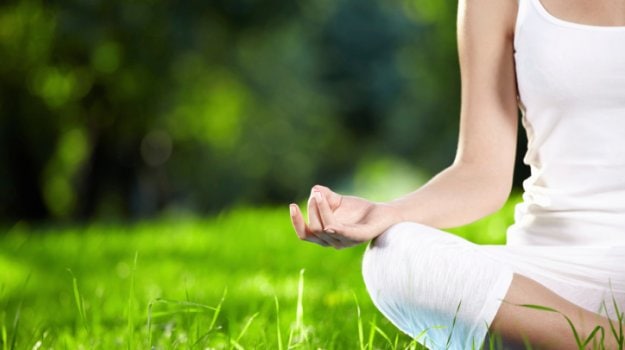
2. GratitudeGrowing up, I’ve always gone off to sleep reciting “Thank you God for the world so sweet, Thank you God for the food we eat, Thank you God for the birds that sing, Thank you God for everything”. When you’re stressed, you’re constantly thinking about how everything in your world is going downhill. So learn to shift the focus to all the things in life that are going right for you and appreciate them. Counting your blessings actually helps put things in perspective, and raises your happiness barometer (tried and tested). Ever since I read Rhonda Byrne’s The Magic, I write down at least 10 things that I’m grateful for every day.3. Eat to Beat StressWhen we are stressed, we forget to eat right and instead resort to sugary, fatty snacks as a pick-me-up. Since food really impacts our emotional state, it is important we check our diet. Skip the caffeine and alcohol since they dehydrate the body and ultimately increase anxiety. So what should you be eating? You can start your day with bananas which help repair cell damage caused due to stress, or a bowl of oats spruced up with fresh fruits and a dash of honey in order to boost positive energy. Even the sweet, pleasant fragrance of the coconut is known to have a psychological effect that reduces anxiety and slows down the heart rate. It also helps tone down the 'fight or flight' response when faced with a stressful situation. Loaded with vitamin B (nature’s own happy pill), lentils help lower tiredness and fatigue, by firing up your energy levels. “Research suggests that the ‘good bacteria’ found in yogurt helps to kill anxiety and depression”, says Dr. Manoj K. Ahuja, Sukhda Hopsital.

4. Self-Soothea) Laugh out loud: Laughing tricks your nervous system into making you happy, it releases endorphins that reduce levels of stress-causing hormones like cortisol and adrenaline. You obviously can’t burst into a fit of giggles at your desk, so maybe put on a comedy TV show or movie to de-stress. You’ll soon be cracking up, rather than cracking up. (Get it?)b) Take a deep breath: One of the most effective ways to activate the relaxation response is by decreasing the heart rate. But since we can't alter our pulse, try deep breathing or diaphragmatic breathing to lower your rapid heart rate. For an easy 3-5 minute exercise, sit up in your chair with your feet flat on the floor and hands on top of your knees. Breathe in and out slowly and deeply, concentrating on your lungs as they expand fully in your chest. This helps oxygenate your blood, center your body, and clear your mind.c) Be Positive: Intuitively, we know how to help others combat stress but can’t help ourselves. So if calling a friend or loved one isn’t in the cards, talking calmly to yourself is the next best thing. Assure yourself that this feeling will pass. Malini Sawhney, a Delhi-based Meditation Expert suggests affirmations as a coping strategy. “I am calm and relaxed. I am in the perfect place for me. I am the divine manifest. Life is good. Thank you! Thank You! Thank You!”d) Jot it Down: Venting on paper before going to bed helps declutter your mind instead of dwelling in the days activities or worrying about tomorrows workload. According to a recent study published in Psychotherapy Research, patients who were told to let out their emotions through expressive writing experienced greater reductions in anxiety and depressive symptoms and better progress in psychotherapy when compared to a control group. Keeping a journal is in fact an effective stress relief exercise as it provides an outlet for expressing difficult emotions and helps you sort out and clarify your thoughts. You can even start a diary on your smartphone or laptop. If you enjoy art, you can draw, paint, or sculpt pieces that express how you are feeling. According to Art Therapist Sonia Bhandari, VIMHANS Hospital, “Artistic expression helps surface hidden emotions, hence being cathartic in nature”.

5. Get More SleepMost people need 7 to 9 hours of sleep a day to get a healthy night's sleep. If only we could slip into slumber as soon as our head hits the pillow! Dr. Adarsh Kumar, Internal Medicine, National Heart Institute says,"Poor sleep takes a toll on everything, from your job performance to your daily chores. So ask yourself this - are you practicing good sleep hygiene”? It’s important to completely unplug and switch off all devices or electronics 90 minutes before bed. Try to block the light from your alarm clock too, since it alerts the body's circadian clock. You can also position your pillow under your neck in order to press against your carotid artery, thereby reducing blood flow to your brain and helping you fall asleep faster. Try rolling your eyes in the back of your head in order to relax the eye muscles and trigger melatonin naturally. Dr. Kumar adds, “Too tired to shower before bed? Just wash your feet and massage them, it usually does the trick”!

6. Exercise (Even For a Minute!)No, seriously. Just a short walk around the office or simply standing up to stretch can offer immediate relief in a stressful situation. Exercise improves blood circulation, releases endorphins and can improve your mood almost instantaneously. Even though we all know the feeling of that post-exercise endorphin rush, we need to learn to take time out to workout daily. It doesn't necessarily have to be power-lifting at the gym or training for a marathon, just a quiet meditative stroll for 30 minutes daily will do the trick. You can even dance around your house, just to warm you up and get your heart pumping. It’s a feel-good way to de-stress - just loosen up and let go of your inhibitions.

7. Listen to MusicWhen you are feeling overwhelmed by a stressful situation, you may avoid listening to music as you feel it is a waste of time. But research shows that taking a break and listening to music actually helps. According to the University of Nevada, Reno, relaxing classical music has a positive effect on the brain and body, can lower blood pressure and reduce your cortisol levels. However, if classical really isn’t your thing, try listening to ocean or nature sounds to relax your mind - it even helps induce sleep.8. Visualisation“Fake it till you make it”. Rather than stressing over things that are not going the way you want them to, visualise a perfect scenario of how you want your life to be. YOU have the ability to design your world. “Imagine the life you want in a pink bubble, imagine every detail and fill it with joy and love. Make it feel so real that you start believing your co-creation is coming true and then put a blue ring of protection around the bubble and release it into the universe”, recommends Delhi-based Meditation Expert Malini Sawhney.
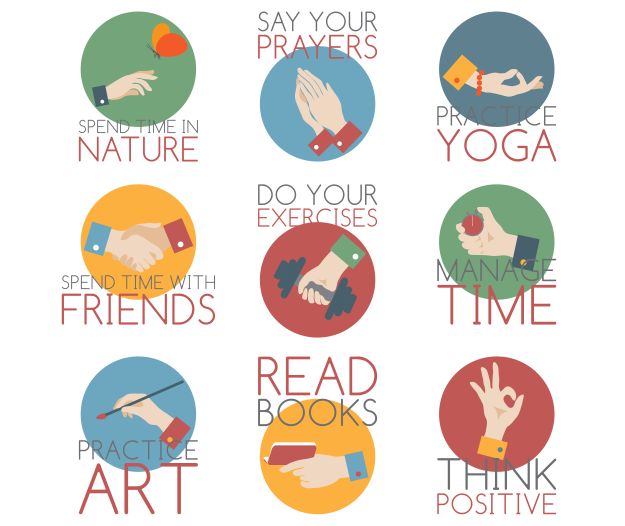 9. YogaYoga is a holistic package that helps in clearing the mind, and making you feel relaxed and peaceful. It basically involves a few techniques such as controlled breathing, stretching, meditation and physical movement. Here are 6 simple asanas that can help you de-stress, unwind and feel mentally rejuvenated.a) Anjali Mudra: Similar to ‘namaste’, all you have to do is sit cross-legged on the floor and bring your palms together with the fingers stretching out to the centre of your chest (heart chakra). Now close your eyes and slowly inhale, hold your breath and then exhale. Continue this pattern for a few minutes.
9. YogaYoga is a holistic package that helps in clearing the mind, and making you feel relaxed and peaceful. It basically involves a few techniques such as controlled breathing, stretching, meditation and physical movement. Here are 6 simple asanas that can help you de-stress, unwind and feel mentally rejuvenated.a) Anjali Mudra: Similar to ‘namaste’, all you have to do is sit cross-legged on the floor and bring your palms together with the fingers stretching out to the centre of your chest (heart chakra). Now close your eyes and slowly inhale, hold your breath and then exhale. Continue this pattern for a few minutes.
b) Balasana (Child’s Pose): Sit on your knees with your hands on the sides (inhale), and then slowly lower your head to touch the floor when you feel your back and hands stretching (exhale). Bring yourself back to your knees (inhale) and continue the process for a couple of minutes.
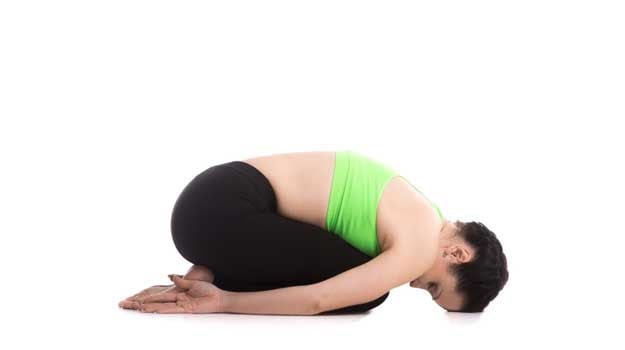
c) Uttanasana: With feet hip-width apart, bend forward, relaxing your head toward the floor. Grab opposite elbows, soften knees, and and just relax your head and neck completely.
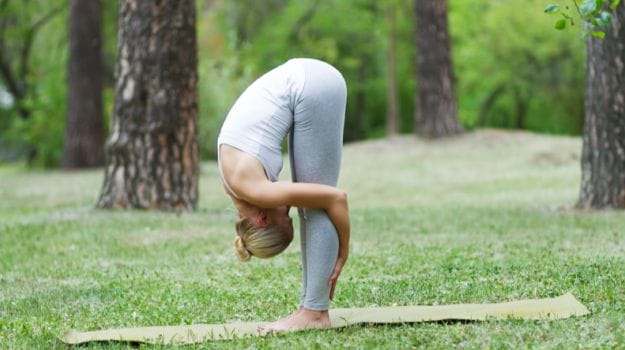
d) Uttana Shishosana: Bring yourself onto all fours by keeping your shoulders above your wrists and your hips above your knees. Move your hands forward a few inches and curl your toes under, then inhale. As you exhale, move your butt halfway back toward your heels and slowly bring your forehead close to the floor by keeping a slight curve in your lower back. Let your hands stretch out, relax your neck and pull your hips back towards your heels. Hold the pose for a few seconds and then release.
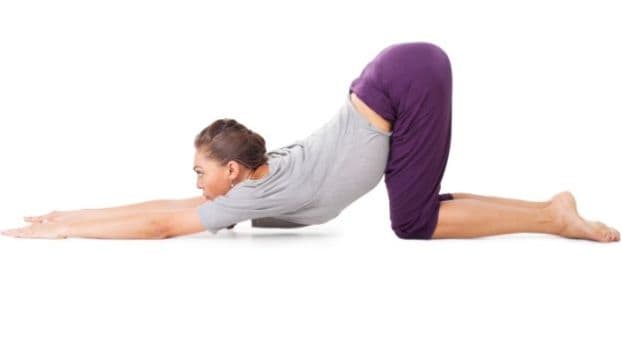
e) Savasana: Now this may seem extremely easy, but Savasana is in fact considered to be one of the toughest asanas to get right. It is the ultimate form of relaxation as it brings the nervous system to a complete rest. Lie down on your back with your eyes closed, arms by your sides, palms facing up and legs stretched out. Let your ankles fall outward. Then slowly start inhaling and exhaling as you melt deeper into the floor with each breath. Stay in this pose for a minimum of five minutes, to really feel relaxed.
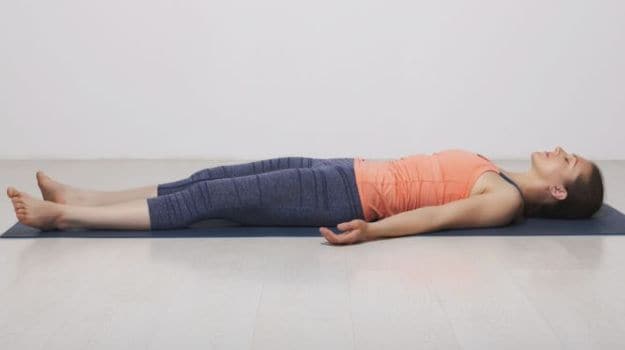
f) Paschimottanasana (Seated Forward Bend): Sit down straight with your legs together, by stretching in front of you and make sure your head, neck and spine are erect. Place your palms on respective knees, and then slowly bend your head forward and reach for your toes with your thumb, index finger and middle finger (without bending knees). Take a deep breath and exhale slowly. Try to touch your head to your both knees, and bend your arms to try to touch elbows on the floor. Repeat this three-four times.
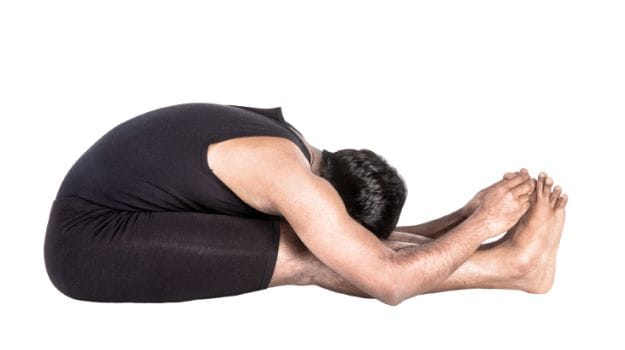
Advertisement
